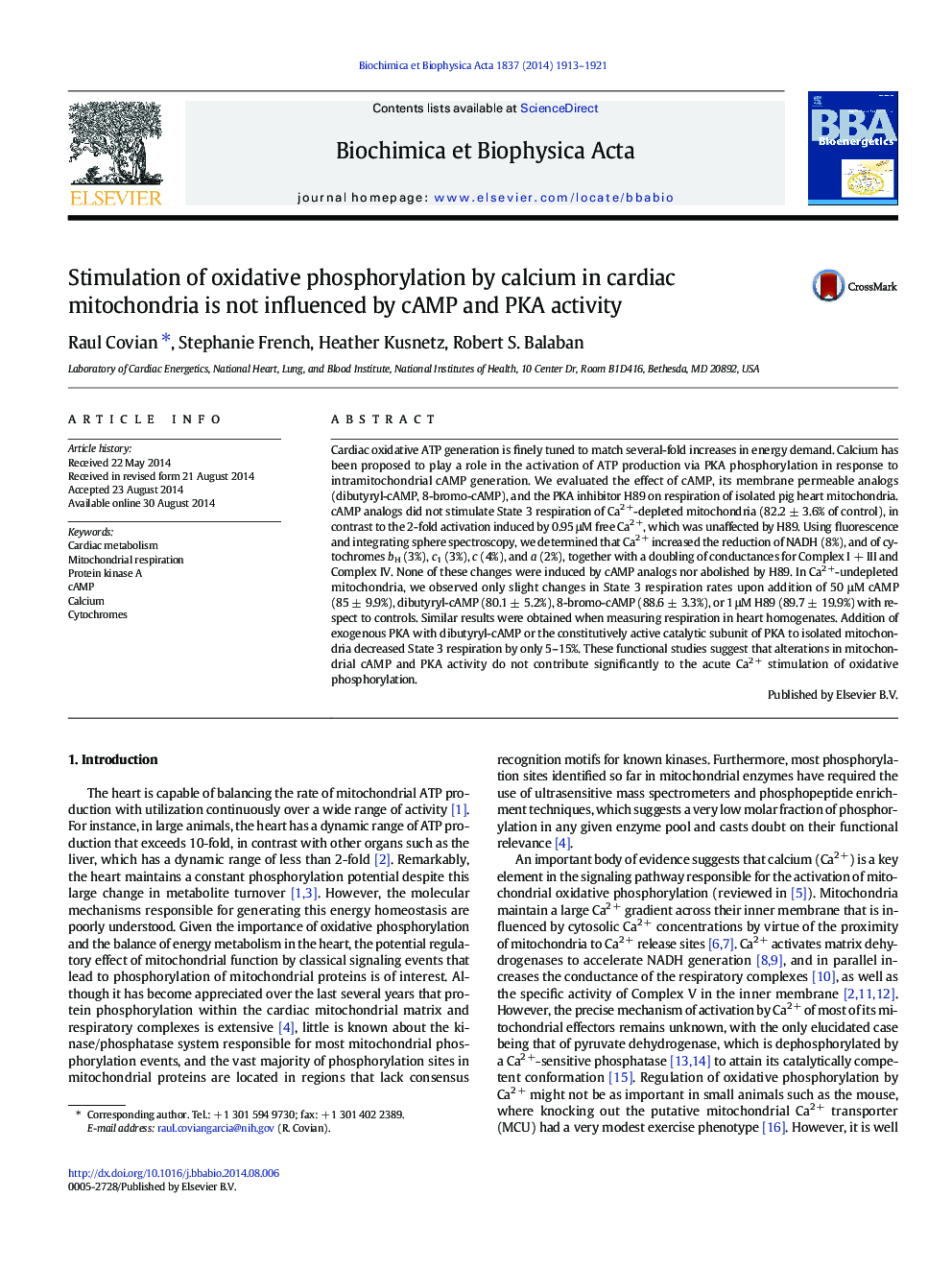| Article ID | Journal | Published Year | Pages | File Type |
|---|---|---|---|---|
| 8298757 | Biochimica et Biophysica Acta (BBA) - Bioenergetics | 2014 | 9 Pages |
Abstract
Cardiac oxidative ATP generation is finely tuned to match several-fold increases in energy demand. Calcium has been proposed to play a role in the activation of ATP production via PKA phosphorylation in response to intramitochondrial cAMP generation. We evaluated the effect of cAMP, its membrane permeable analogs (dibutyryl-cAMP, 8-bromo-cAMP), and the PKA inhibitor H89 on respiration of isolated pig heart mitochondria. cAMP analogs did not stimulate State 3 respiration of Ca2 +-depleted mitochondria (82.2 ± 3.6% of control), in contrast to the 2-fold activation induced by 0.95 μM free Ca2 +, which was unaffected by H89. Using fluorescence and integrating sphere spectroscopy, we determined that Ca2 + increased the reduction of NADH (8%), and of cytochromes bH (3%), c1 (3%), c (4%), and a (2%), together with a doubling of conductances for Complex I + III and Complex IV. None of these changes were induced by cAMP analogs nor abolished by H89. In Ca2 +-undepleted mitochondria, we observed only slight changes in State 3 respiration rates upon addition of 50 μM cAMP (85 ± 9.9%), dibutyryl-cAMP (80.1 ± 5.2%), 8-bromo-cAMP (88.6 ± 3.3%), or 1 μM H89 (89.7 ± 19.9%) with respect to controls. Similar results were obtained when measuring respiration in heart homogenates. Addition of exogenous PKA with dibutyryl-cAMP or the constitutively active catalytic subunit of PKA to isolated mitochondria decreased State 3 respiration by only 5-15%. These functional studies suggest that alterations in mitochondrial cAMP and PKA activity do not contribute significantly to the acute Ca2 + stimulation of oxidative phosphorylation.
Related Topics
Life Sciences
Agricultural and Biological Sciences
Plant Science
Authors
Raul Covian, Stephanie French, Heather Kusnetz, Robert S. Balaban,
